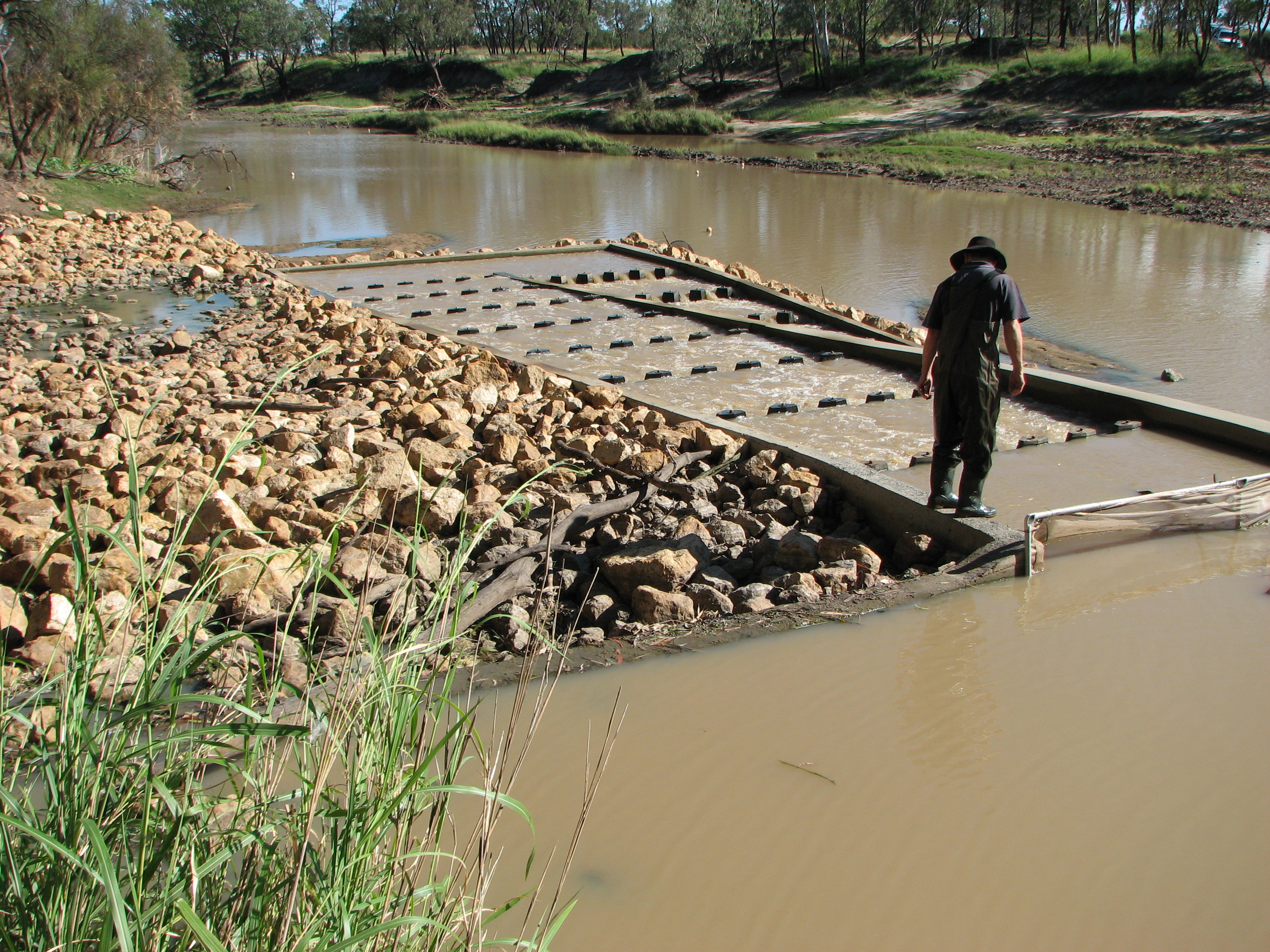|
|
Barriers and instream structuresBarriers to the passage of aquatic fauna can result from physical blockage of the waterway such as dams, weirs or floodgates. Culverts, road crossings and other physical structures may allow water to pass, but impede the movement of aquatic species. In many cases, aquatic fauna are unable to move into waters upstream or downstream of these barriers. Barriers can also be hydraulic (water velocity and turbulence), chemical (water quality), and behavioural (darkness, unnatural substrates). The raising and construction of Waterway Barrier Works can have specific legislative requirements for operational work, and can require approvals under legislation. Quick facts
What can form a barrier to aquatic species passage (biopassage)?Physical structures alter natural flow regimes and physically obstruct passage of aquatic fauna (also known biopassage). The location of a barrier can impact on access to key habitats needed for aquatic species life cycles. This can impact the ability of aquatic species to breed, avoid predators, survive in dry periods, and find food. Barriers close to estuarine waters have impacts on the life cycle of diadromous fish species. Barriers can also change the hydrology of a waterway (for example, weir pools) and reduce the diversity of aquatic habitats required by aquatic species. Barriers are not always physical. Other aspects of flow or habitat alteration can delay or prevent fish passage. Aquatic weeds can reduce accessibility and visibility through a waterway. While waterfalls form a natural barrier to fish passage, other changes to the velocity of a waterway can form a barrier to fish passage. Chemical barriers, such as river reaches with low dissolved oxygen concentrations, can impact on fish habitat and movement, as can temperature changes. While anthropogenic structures may appear to allow fish passage, fish may avoid dark areas or areas with different hydraulic characteristics (e.g. long, narrow pipes), or unnatural substrates (e.g. concrete channels), resulting in no realised connections. Barriers can also be either a complete blockage (such as large dams) or partial/temporary barriers that restrict flow during particular flow events. Smaller barriers disrupt movement of smaller species and juvenile fish. For example, pipes and culverts can considerably modify channel shape, increase velocities, and also reduce water depth within the structure. Some barriers may 'drown out' during high flows and allow movement of aquatic species temporarily. Chemical and temperature barriers are not regulated currently in Queensland. Impacts of barriers to fish passageBarriers can cause local extinctions upstream of an obstruction and can also cause a reduction in fish populations downstream of a barrier[3]. The swimming abilities of fish play a significant role in their capacity to bypass barriers. For example, the majority of migrating native fish in coastal Queensland catchments are juvenile diadromous or small bodied species, which typically have relatively weak swimming abilities[2]. Barriers are also significant in dry periods or times of low flow as they can inhibit fish from accessing refuges. Fish need waterholes and other refuge areas to survive in episodically or intermittently flowing river systems. Barriers reduce connectivity in dry periods where the watercourse cannot flow over the barrier for extended periods of time. Even small instream structures such as weirs can cause a large reduction of fish movement between river reaches. This can increase the risk of drought impacts on fish populations[1]. Impacts of instream barriers can include population declines and extinction, reduced spatial distribution of species and degraded fish habitats, and can affect commercial, recreational, and traditional fisheries. Additional information
Pages under this sectionReferences
Last updated: 10 May 2021 This page should be cited as: Department of Environment, Science and Innovation, Queensland (2021) Barriers and instream structures, WetlandInfo website, accessed 8 May 2025. Available at: https://wetlandinfo.des.qld.gov.au/wetlands/management/fish-passage/barriers/ |

 — Department of the Environment, Tourism, Science and Innovation
— Department of the Environment, Tourism, Science and Innovation


